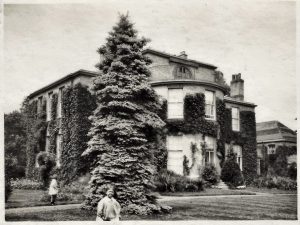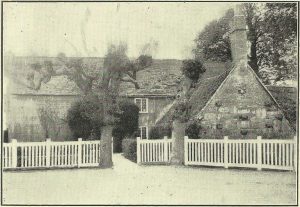By the 18th century most of the houses in Milton were in the High Street and Fen Road (previously Lane). The Waterbeach road became a turnpike (toll road) to Ely in 1763 and on the grass verge by the modern allotments is a mile stone showing the distances to Ely, Cambridge and London in Roman numerals.

The two largest houses in Milton, Milton Hall and Milton House (also known as Cole’s House) were built or restored (Milton House) in the 18th century. The building of Milton Hall started in 1772 by Samuel Knight son of the Rev Samuel Knight, lord of the manor and Rector at All Saints’ Church; the Hall was completed in 1794 after the death of the Rev Knight in 1790. This third manor house in Milton was built adjacent to the site of the Tudor manor house which had become a farmhouse where the Knight family lived during the building of Milton Hall. Soon after the completion of the Hall, the grounds were landscaped by Humphrey Repton of the school of Capability Brown, promoting informal ‘natural’ landscapes; Milton Hall had its pastureland, with scattered oak trees and a lake – all visible from the rear of the Hall. The parkland at the front of the Hall contained the road that continued from Church Lane and cut across the park close to the front of the Hall before it connected with the turnpike road to Ely. This road was soon replaced by a diversion around the boundary of the parkland leading from the High Street to the turnpike road by the present North Lodge. Both this lodge and West Lodge(17 Knights Way), and the existing boundary wall opposite the College of West Anglia, were built in the mid-19th century.

The timber framed house, Milton House (28 Fen Road), also known as Cole’s House after William Cole (1714-1782), the antiquarian and curate at Waterbeach, was restored by Cole around 1768; this had been a King’s College farmhouse. The house was restored with aspects of the style of a late 18th house including small pained sash windows, some as bays and corridors to rooms at ground and first floor levels. The house was rendered outside with plaster and 18th century brick and medieval limestone was incorporated into the structure of the house (the house was extended westwards in the 1920’s and extensive further restoration work was carried out in 2016).
A farmhouse immediately to the east of Cole’s House and adjacent cottages were built in the late 18th century. Only 32 Fen Road still exists while an Edwardian farmhouse (30 Fen Road) replaced the earlier farmhouse. Farmland to the south of 30 and 28 Fen Road was sold for the housing development in Old School Lane in the early 1960’s, remaining land was later incorporated into the Milton Country Park. At the end of the 18th century there were 40 dwellings housing 55 families with a total population of 270.
